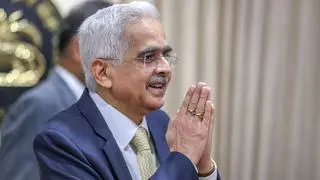The recapitalisation bonds for public sector banks will have an interest cost of close to ₹9,000 crore, said Arvind Subramanian, Chief Economic Advisor (CEA).
“The true fiscal cost of issuing the 1.35 lakh crore recapitalisation bonds is the interest payment of about ₹8,000-9,000 crore,” he said at a lecture at SGTB Khalsa College on Wednesday.
But, he pointed out that the cost would be offset by the confidence impact of addressing the critical economic bottleneck that would in turn increase credit supply, private investment and growth.
“The rest is all accounting,” he said, adding that it could potentially increase the Centre’s debt and add to its deficit.
On whether recapitalisation bonds add to the fiscal deficit, he said under standard international and IMF accounting, they do not increase deficit and are “below-the-line” financing.
“But under India’s convention, these bonds would add to deficit,” he said.
To spur lendingThe comments by the Chief Economic Advisor come a day after the government unveiled a ₹2.11-lakh crore capital infusion plan for public sector banks in the hope that it would boost lending, spur private investments and create more jobs.
To be carried out over a two-year period, starting this fiscal, it would include recapitalisation budgetary support and tapping the market by diluting government equity.
Subramanian, however, said that the accounting to some extent was “moot” and the costs were always there for the government.
“The government is already liable to banks as owner for the unrecoverable part of the underlying loans that were made. Issuing bonds merely makes explicit an implicit liability; or rather puts on the books what is a contingent liability,” he pointed out.
Banking reformsNoting that Finance Minister Arun Jaitley had already said that the recapitalisation would be accompanied by banking sector reforms, Subramanian added that these should be with the objective of where the sector should be in five to 10 years for financing a double-digit growing economy.
He further said that recapitalisation must be selective and incentive-based, directing it to those banks where new credit creation will be maximum, and unviable banks should be considered last.
“Since all banks must maintain a minimum capital adequacy, one possibility would be to recapitalise the unviable banks only to the extent necessary to finance their current balance sheet size while explicitly not providing for their growth,” the Chief Economic Advisor said. He also spoke on the debate on private ownership of public sector banks.
Under the recapitalisation plan, banks will have to raise about ₹58,000 crore by tapping the market including diluting government equity but retaining it at 52 per cent.







Comments
Comments have to be in English, and in full sentences. They cannot be abusive or personal. Please abide by our community guidelines for posting your comments.
We have migrated to a new commenting platform. If you are already a registered user of TheHindu Businessline and logged in, you may continue to engage with our articles. If you do not have an account please register and login to post comments. Users can access their older comments by logging into their accounts on Vuukle.